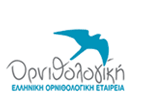A Strategy for Raising Awareness and Inviting Local Participation: The Example of "Stavros", the Green Turtle in Lakonikos Bay, Greece
19th Annual Symposium on Sea Turtle Biology and Conservation.South Padre Island, Texas, USA, 26/2-6/3/1999.
Συμμετοχή στο "19ο Ετήσιο Συμπόσιο για τη Βιολογία και Προστασία των Θαλασσίων Χελωνών" (19th Annual Symposium on Sea Turtle Biology and Conservation). South Padre Island, Texas (ΗΠΑ), 26/2-6/3/1999, Poster abstract
Achieving acceptance and local participation has been shown to play an important role in species conservation on a world wide basis. Conservation efforts that are limited, to forming legislative measures, without first establishing bonds and raising awareness within the local community, are less likely to be successful in the long term. Following 15 years of experience, the Sea Turtle Protection Society (STPS) has developed a strategy for approaching local communities with the objective of raising public awareness and invoking local participation in sea turtle conservation.
The STPS strategy includes interacting with different levels in society:
- school children through specially prepared environmental education programmes
- fishermen through incidental catch monitoring and public awareness programmes
- national and local government and authorities
- national and local media (TV, newspapers and magazines)
The case of Stavros, a juvenile Green turtle (Chelonia mydas), that was released in Lakonikos Bay after having been treated at the Sea Turtle Rescue Centre in Glyfada is a prime example of how such a strategy can aid in changing people's attitudes and motivate them to partake in nature conservation.
Poster text Lakonikos Bay, an important fishing area in southern Peloponnesus, Greece, is one of the investigated wintering areas for the Green and the Loggerhead turtles in the Mediterranean. Introduction
- more than 50 known cases of turtles dead due to the fishing activity (Caretta caretta, Chelonia mydas) are recorded washed out on the nesting beaches of Lakonikos Bay in the years, 1993-96.
- following a pilot project monitoring turtle by-catch in Lakonikos Bay, carried out in the years 1989-91, the STPS launches a three year monitoring and conservation programme co-funded by the European Commission (Life-Nature regulation) in the Evrotas river area that has been proposed for inclusion in the European Natura 2000 network
- 38 professional fishing boats are active in the Bay of Lakonikos, of which 2 are trawlers, 6 beach seines and 30 small fishing boats using longlines and nets
Picture no1
10 August 1998: Mr.Stavros Kritikakos, a professional fisherman active in Lakonikos Bay, finds a Green turtle caught on his longline. He contacts the STPS project in the area for help.
1. Long lasting presence and active involvement at the local level
- the permanent staff of the winter project, based in the port of Gytheio, work on establishing and developing relationships with the fishermen of the area aiming at raising awareness and subsequently reducing sea turtle mortality due to by-catch in Lakonikos Bay
- this involves integrating with the local community and fishermen, accompanying fishing trips as observers and organising special meetings and educational events for the different target groups
- a very important contributor to raising awareness is the conservation programme carried out on the nesting beaches of the area during the summer. This includes monitoring the loggerheads' nesting cycle, operating information stations, organising slide shows and other special educational activities for tourists and residents
Picture no2
The juvenile Chelonia mydas has a 6 cm hook stuck in its throat and is transported -courtesy of the local bus company- to the STRC in Glyfada, Athens for treatment.
2. Required infrastructure for immediate intervention
- with the concerted intervention/action of the Lakonikos project and the central Athens office, in co-operation with the Gytheio port authority and the local bus company the injured turtle is transported to the Sea Turtle Rescue Centre in Glyfada within 8 hours
- the young turtle is the only the fifth case of Chelonia mydas treated at the STRC which in its 4 years of operation has treated 113 cases of injured turtle in total
- the turtle is put on a special diet and medication and 6 weeks later the hook makes it through the juvenile's body without causing any harm
- The turtle is named "Stavros" after the fisherman who caught it but who also fought for its rescue and is ready to be released back into its natural environment. It is considered best in this case for the juvenile turtle to be released near to the site of capture, possibly its rearing/ feeding/ wintering ground ?
Picture no3
The people in Lakonikos Bay take great interest in the rehabilitation of the young turtle. On the day of the release the local community organises and sponsors a celebration.
3. Informing/educating and achieving active participation of the local authorities
- an essential part of the Society's work is working together with the local community
- regular contacts are made to keep the municipalities and the Prefectures up to date with the projects' evolution. The Lakonikos project co-organises every year events with the local authorities in order to sensitise visitors and locals but also to raise awareness within the public sector
- in Lakonia, the Society's conservation efforts are supported at different levels through: sponsoring (funding of publications/events), active involvement (setting up and running the Evrotas Environmental Centre/ information Stations), discussing and preparing management and conservation measures (sanddune restoration project)
Picture no4
The fisherman Mr.Stavros takes pride in releasing the juvenile turtle close to where it was caught.
4. Raising awareness and direct involvement of the local population
- local fishermen become actively involved in turtle conservation and provide the STPS with information and data relevant to accidental capture of turtles in fishing gear In the first period of the winter project (October 1997 - September 1998) 16 loggerhead and 22 green turtles were caught and safely released by the fishermen themselves.

